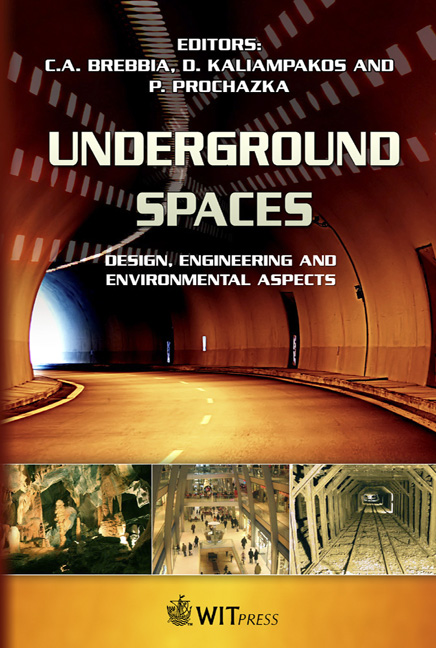The Effect Of A Baffle On The Heat Transfer In Underground Auxiliary Ventilation Systems
Price
Free (open access)
Transaction
Volume
102
Pages
10
Page Range
179 - 188
Published
2008
Size
407 kb
Paper DOI
10.2495/US080191
Copyright
WIT Press
Author(s)
S. M. Aminossadati & B. Ghasemi
Abstract
This paper presents a computational fluid dynamics simulation to examine the effects of the baffle on the air flow field and the heat transfer rate in a space located beneath a ventilation channel. The computational model consists of a two-dimensional channel equipped with a thin baffle hanging from the top wall and a cavity located underneath simulating the underground space. Air flows trough the channel at a uniform velocity, c u , and temperature, c T . The cavity base is assumed to be heated at a constant temperature, h T , while the vertical walls of the cavity are well-insulated. The top wall of the channel is maintained at a constant temperature, c T . The continuity, momentum and energy equations are solved numerically using the control-volume approach to examine a combination of natural and forced convection flows. The results show that even though the existence of the baffle improves the cavity ventilation performance at low Richardson numbers, it has a negative impact at high Richardson numbers. Keywords: heat transfer, forced convection, underground ventilation, baffle. 1 Introduction Nowadays, underground spaces are being utilised for a wide variety of purposes such as sport halls, power stations, waste repositories, mining operations and underground cities. The ventilation system is a key factor in the design of such spaces. Moreover, as the underground operations are continuing to develop to greater depths, the associated issues with the ventilation systems such as the heat load and airborne contaminants are becoming more important.
Keywords
heat transfer, forced convection, underground ventilation, baffle.





